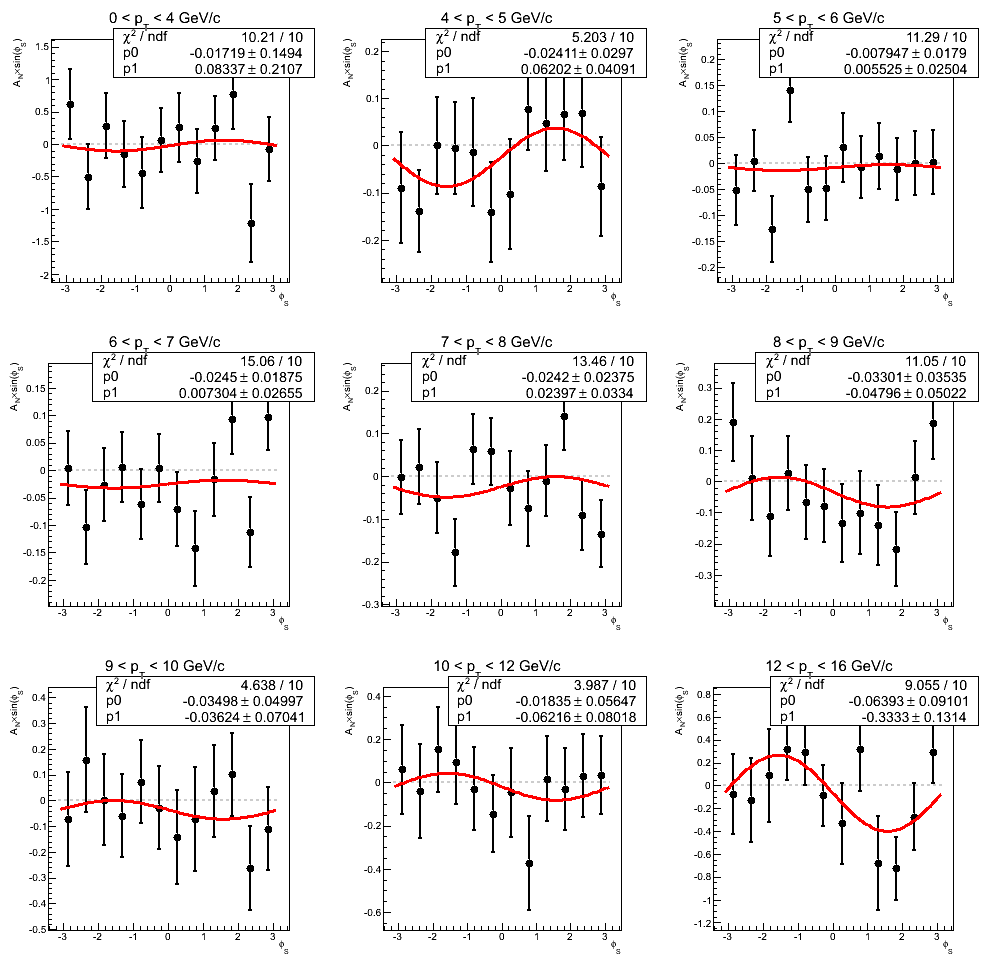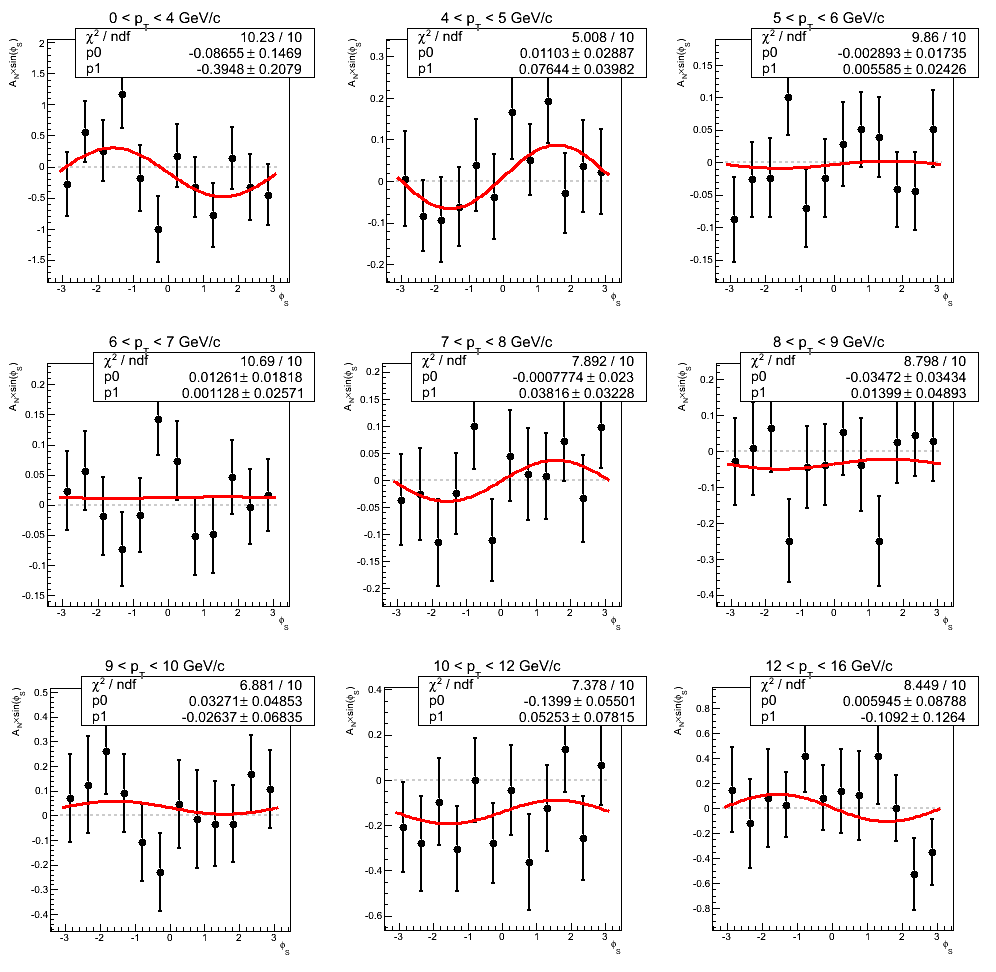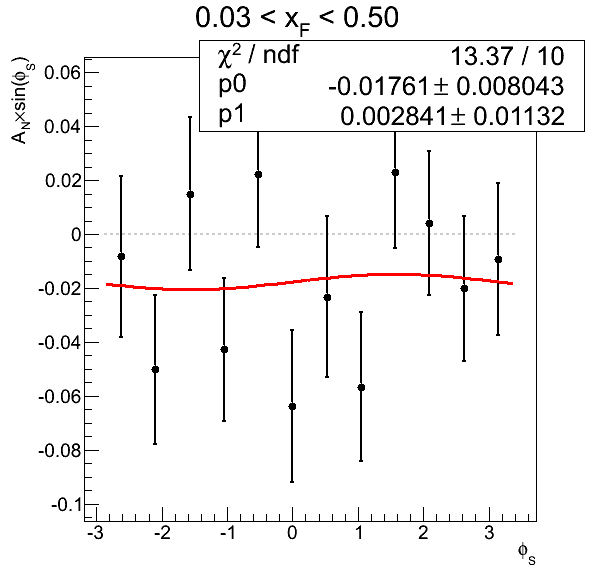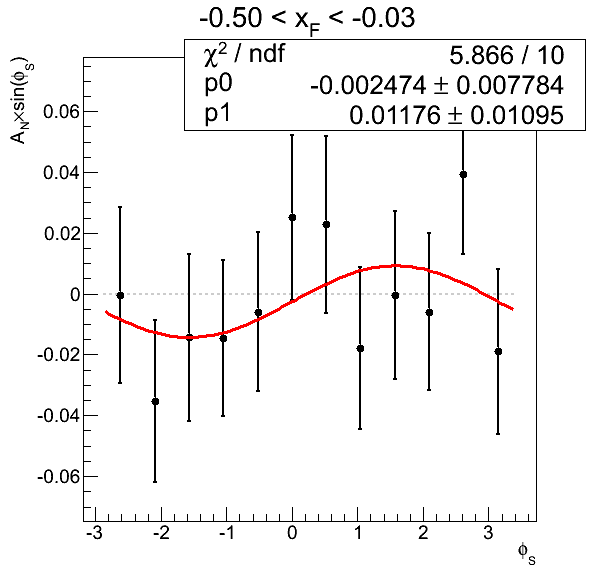- drach09's home page
- Posts
- 2022
- 2020
- June (1)
- 2019
- 2018
- 2017
- 2016
- 2015
- 2014
- December (13)
- November (2)
- October (5)
- September (2)
- August (8)
- July (9)
- June (7)
- May (5)
- April (4)
- March (4)
- February (1)
- January (2)
- 2013
- December (2)
- November (8)
- October (5)
- September (12)
- August (5)
- July (2)
- June (3)
- May (4)
- April (8)
- March (10)
- February (9)
- January (11)
- 2012
- 2011
- October (1)
- My blog
- Post new blog entry
- All blogs
2006 EEMC Neutral Pions: Asymmetry in Varying Detector Locations
One suggestion to come out of last week's Spin-PWG meeting was to examine the asymmetry for different detector locations. For this excercise I use the traditional single-arm method of calculation. For further details, see my blog here. This method is used extensively by Steve Heppelmann with recent FMS measurements.
One potential issue with this is that the current calculation is not really optimised for isolating different areas of the detector. For the cross-ratio I divide the detector into upper and lower hemispheres. Of course, the EEMC is physically divided into 30º sectors, two of which straddle the horizontal and vertical axes. Thus, I have made a tweak to my code in this calculation. I reset the angular range to -11π/12 < φS < 13π/12, i.e. -165º < φS < 195º. Now, the 12 bins are 30º each but with bin centers which straddle the horizontal and vertical axes. To first order, then, this should yield the sector-dependence of the asymmetry.
Figure 1: Asymmetry in xF-bins (xF > 0)

Of course, statistics are quite limited. If anything the χ2/ν's are too good, so it is diffuclt to say with certainty there is some systematic difference in a particular φ location.
Figure 2: Asymmetry in pT-bins (xF > 0)

The story is similar in terms of pT.
Figure 3: Asymmetry in xF-bins (xF < 0)

Again, now, with xF < 0, it is difficult to decipher phi-dependent systematic trends.
Figure 4: Asymmetry in pT-bins (xF < 0)

A very similar story exists in pT for xF < 0.
Figure 5: Asymmetry for 0.03 < xF 0.5 and 4 < pT < 16 GeV/c


Integrating over the relevant range of xF and pT can enhance our statistics and give us perhaps a better chance to observe systematic behavior in the phi-bins. Figure 5 shows the two asymmetry figures for positive and negative xF. The blue beam asymmetries show some fluctuation, though, the χ2/ν is not absurd. The yellow beam asymmetries are slightly higher than 1σ, and the χ2/ν is too good. A constant fit returns -0.00247357±0.00778415 with χ2/ν = 7.01796/11.
- drach09's blog
- Login or register to post comments
